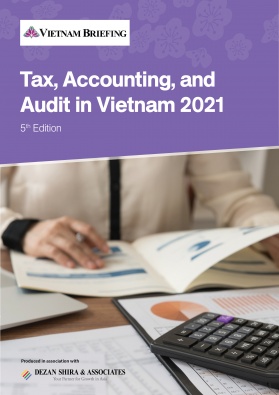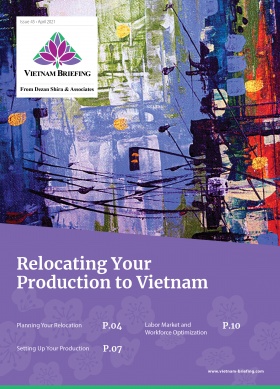Q&A: Shifting Tides: What’s next for China, Vietnam, Singapore, and Hong Kong in 2021
Following the COVID-19 pandemic and the US-China trade war, Asia’s economy is surpassing expectations and recovering quickly.
With a population of over 4.5 billion, the largest GDP in the world, and strong demand for high-quality products and services, Asia is an export powerhouse for many European and US businesses.
Whether it is China’s head start in economic recovery or Vietnam curtailing the spread of the pandemic – countries in Asia have been ahead of the curve and some still surprised the world with economic growth in 2020.
Recently, Marco Förster, Dezan Shira & Associates’ International Business Advisory Manager, Ho Chi Minh City office, shared updates in a webinar on the improving business environment and increasing scope of opportunities that China, Vietnam, Singapore, and Hong Kong offer to foreign investors.
Due to the highest interest in Vietnam, we have provided a few snippets of the webinar below. For an in-depth analysis of the four countries, readers can view the webinar here.
In light of the title of this webinar, how is manufacturing evolving and which countries are strong contenders?
The tides are shifting as we experience a new normal with businesses and supply chains disrupted. This shift can be challenging for smaller companies and small and medium-sized businesses to adapt. Each country has strengths and weaknesses and these will play a key factor when deciding to relocate or shift manufacturing operations; therefore investors should do their due diligence before deciding to make the move. There is no one size fits all.
Though a mass corporate exodus from China seems unlikely, we see extensive movement from foreign investors into Southeast Asia. These days, diversifying supply chains means much more than just following cheap labor. Visa obtainability and entry restrictions, internet freedom, and the country’s intertwinement within the world’s network of free trade agreements are becoming crucial factors to consider before making a move. On top of this, Western firms will experience more pressure from their home markets soon. With regulatory changes such as the German Supply Chain Law, it will soon be possible to sue firms in their home countries for labor and production infringements within their supply chains abroad.
This is where Vietnam has emerged as a strong contender for China plus one operations. Due to its proximity to China, free trade agreements, and lower costs, in our experience, most clients have chosen to move part of their operations to Vietnam.
Can you tell us about the geography and infrastructure of China and Vietnam?
Sure, China has several manufacturing bases – in the northeast, you have the Bohai Bay/Bohai Economic Rim which consists of the capital Beijing, Tianjin, cities in Hebei, Liaoning, and Shandong. Then you have the Yangtze River Delta which consists of Shanghai, Nanjing, Hangzhou, Suzhou, and Ningbo and a population two times higher than Vietnam’s. Finally, there is the Pearl River Delta also known as the Greater Bay Area. This consists of Hong Kong, Guangzhou, Shenzhen, and Macao. This area is even more impressive given its small size but with a larger GDP than South Korea. Industries like textiles, shoes, electronics are popular.
In Vietnam, in the north, you have the Red River Delta which consists of Hanoi, Hai Phong, and other cities. This area is close to China and recently has been attracting several EU firms near the port of Hai Phong. Its location is also ideal due to existing supply chains in the area. In the South, you have the Mekong Delta which consists of Ho Chi Minh City, Phu Quoc, and other provinces. With a population of around 21 million, this area is economically stronger than the north. It’s important to note that there are other small manufacturing hubs in both countries that are available as well.
So how does China and Vietnam compare?
As mentioned earlier, both countries have their strengths and weaknesses. Vietnam cannot absorb all of China’s manufacturing simply due to its size, but there are other factors that will help you make an informed decision. For example, in our experience, company incorporation for a trading company took two months in China, whereas Vietnam fared better and took one and a half months. This included all trading licenses, documents, and opening of a bank account. Tariff rates are lower in Vietnam than in China, however, China fares better in ease of business rankings. While China has signed more free trade agreements than Vietnam, Vietnam recently signed the EU-Vietnam free trade agreement and is the only country in ASEAN after Singapore to boast of this FTA. It also has agreements with ASEAN as well as China and India making it well-positioned for trade between China, the EU, and the US.
In terms of other soft factors and taxes, Vietnam is welcoming of visitors and foreign investment with an easy e-visa policy for most countries. Vietnam also scores higher than China in terms of internet freedom. For taxes, Vietnam again comes on top due to a lower corporate income tax rate of 20 percent compared to China’s at 25 percent. VAT rates in Vietnam are also lower than China’s at 10 percent and 13 percent respectively.
So, is Vietnam really ‘it’?
That would depend on the investor’s definition. If by ‘it’ you mean factory of the world, then no. If by it, you mean geographically well placed, with a network of free trade networks ready to accept foreign investment, then yes. China has 16 times the workforce than Vietnam. Therefore, there is a need to manage expectations as there are limitations to Vietnam. Nevertheless, Vietnam’s economy is well-positioned within Southeast Asia to take on what’s coming and move to higher-end manufacturing. Investors that move need to look at the whole picture while looking at various factors to plan their production shift. No one factor such as costs or labor can justify the need to move, rather the approach should be tailored to your business or investment.
About Us
Vietnam Briefing is produced by Dezan Shira & Associates. The firm assists foreign investors throughout Asia from offices across the world, including in Hanoi, Ho Chi Minh City, and Da Nang. Readers may write to vietnam@dezshira.com for more support on doing business in Vietnam.
We also maintain offices or have alliance partners assisting foreign investors in Indonesia, India, Singapore, The Philippines, Malaysia, Thailand, Italy, Germany, and the United States, in addition to practices in Bangladesh and Russia.
- Previous Article Tax, Accounting, and Audit in Vietnam 2021 – New Publication from Dezan Shira & Associates
- Next Article Warum die Agrartechnologie das Wachstum der vietnamesischen Hi-Tech-Industrie fördern wird







